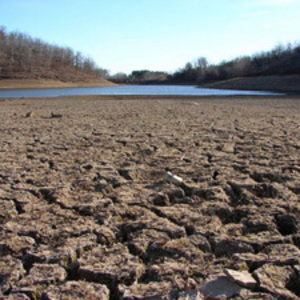Model may help growers mitigate costly droughts




National Oceanic and Atmospheric Administration
June 26, 2014
BY University of Florida
A University of Florida-created model may help growers plant at optimal times and avoid crop-destroying drought, which can cost millions of dollars in a given year, according to one of the tool’s creators.
If growers know when their crops need the most water, they can plant accordingly, said Keith Ingram, an associate scientist in UF’s agricultural and biological engineering department, part of the Institute of Food and Agricultural Sciences.
Although forecasts indicate a drought’s likelihood, they aren’t perfect, Ingram said. But they can help a farmer decide whether to plant a crop earlier or later than usual so drought is less likely to occur when the crop is most sensitive to drought, Ingram said.
ARID, the Agricultural Reference Index for Drought, could help growers avert catastrophic losses such as those growers suffered in the nationwide 2012 heat wave and drought. The National Climatic Data Center estimated that year’s U.S. crop damage at $30 billion.
In a recent study, scientists used ARID to predict crop yields by quantifying water loss for cotton, soybeans, corn and peanuts on eight farms in Florida and Georgia. They looked at a combined 134 years of daily weather data from the farms and found ARID can reasonably predict the crops’ drought levels.
“This data helps producers and buyers plan their decisions, and it helps identify hot spots where food aid might be needed,” said Jim Jones, an adviser on the study led by former UF doctoral student Prem Woli.
Advertisement
Advertisement
ARID could have wide uses, Woli said.
“ARID has potential to predict various responses by a crop that are water stress-related ─ such as grain yield, total biomass produced, pest and disease infestation and more ─ for any field crop that is sensitive to drought stress,” said Woli, one of the tool’s inventors.
Woli, now a research fellow at Washington State University, created ARID in 2010 with help from Ingram and Jones.
ARID takes data, including daily rainfall, temperature, sunlight, wind speed and humidity, and compares potential versus actual amounts of water that evaporates from plants into the atmosphere.
When roots cannot take up enough water up from the soil to replace evaporated water, plants experience stress, said Ingram.
Advertisement
Advertisement
Most drought indices can’t estimate crop growth or productivity loss because they’re not based on plant physiology, said Ingram, also director of the Southeast Climate Consortium. The consortium is a multidisciplinary group of scientists from eight universities in the Southeast who work to help growers and others manage climate risks.
Drought comes in various forms: Agricultural drought is characterized by insufficient water for maximum crop growth, and varies by the time of year. A winter drought may not affect crops as much as a summer drought, because plants need less water during the cool, short days of winter.
Ingram, Woli, Jones, director of the UF-based Florida Climate Institute and Gerrit Hoogenboom, an agrometeorology professor at Washington State, co-wrote the paper. It appears in this month’s issue of the Journal of Agronomy and Crop Science.
Related Stories
The U.S. Department of Energy Bioenergy Technologies Office (BETO) announced up to $23 million in funding to support research and development (R&D) of domestic chemicals and fuels from biomass and waste resources.
The U.S. DOE has announced its intent to issue funding to support high-impact research and development (R&D) projects in two priority areas: sustainable propane and renewable chemicals and algal system cultivation and preprocessing.
Sens. Sherrod Brown, D-Ohio, and Pete Ricketts, R-Neb., in August introduced the Renewable Chemicals Act, a bill that aims to create a tax credit to support the production of biobased chemicals.
The Chemical Catalysis for Bioenergy Consortium, a consortium of the U.S. DOE’s Bioenergy Technologies Office, has launched an effort that aims to gather community input on the development of new biomass processing facilities.
USDA on March 8 celebrated the second annual National Biobased Products Day, a celebration to raise public awareness of biobased products, their benefits and their contributions to the U.S. economy and rural communities.
Upcoming Events










